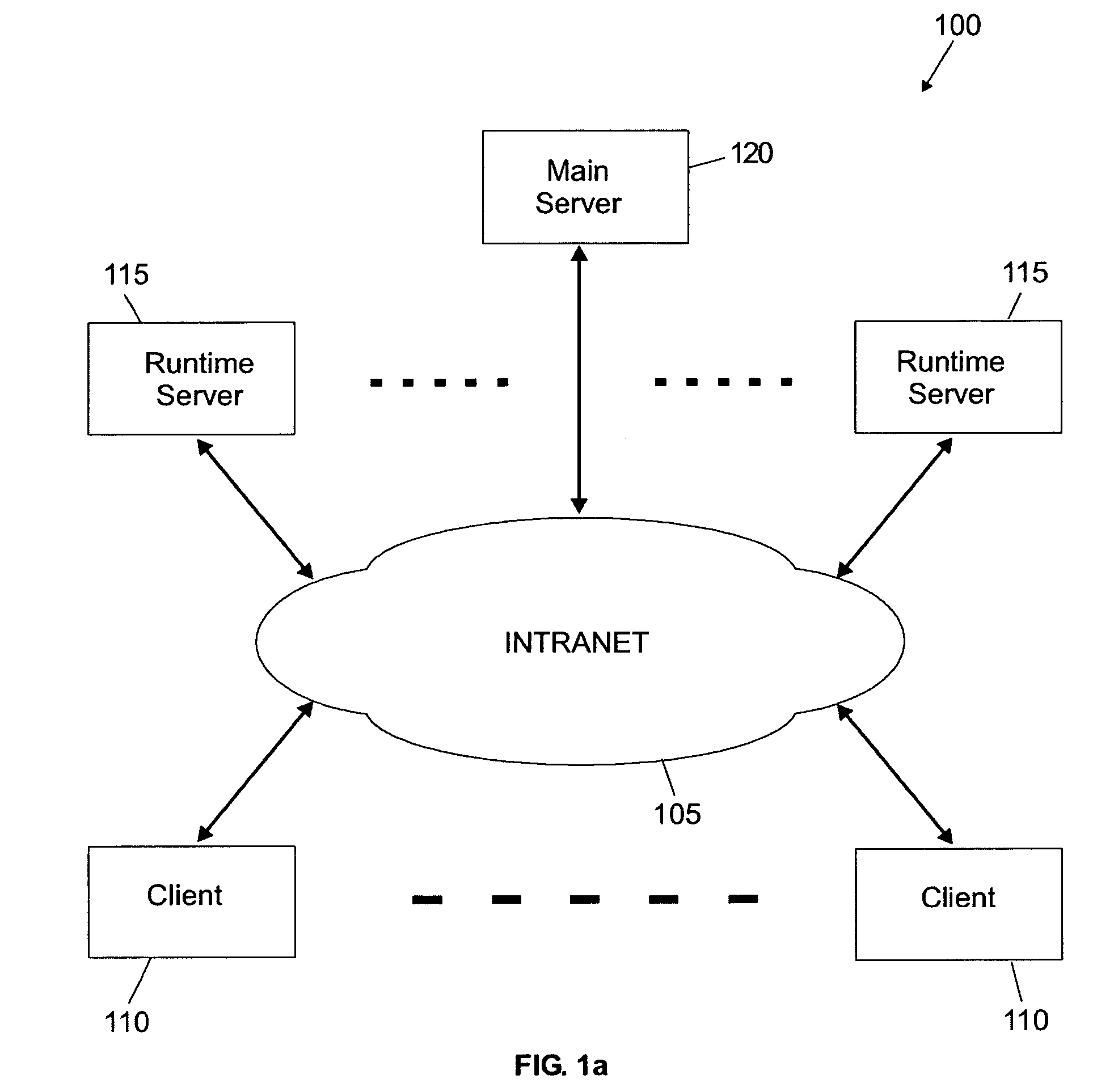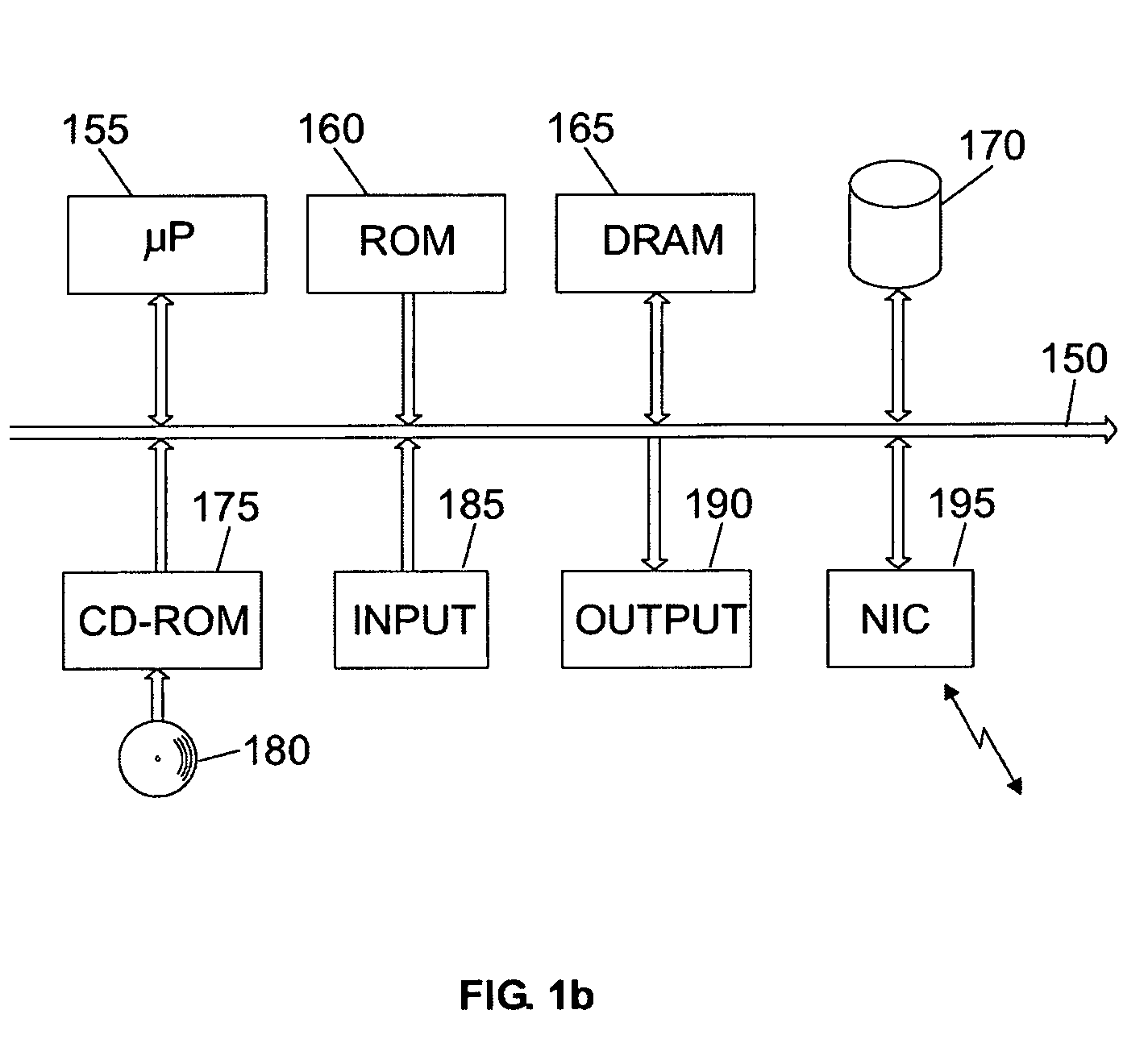Slow-dynamic load balancing method
a load balancing and slow-dynamic technology, applied in the field of data processing, can solve the problems of adversely affecting the overall performance of the system, unsatisfactory load balancing methods known in the art, and inability to replicate specific information for all clients on the different servers, so as to reduce the switching of clients
- Summary
- Abstract
- Description
- Claims
- Application Information
AI Technical Summary
Benefits of technology
Problems solved by technology
Method used
Image
Examples
Embodiment Construction
[0020]With reference in particular to FIG. 1a, a data processing system 100 with a distributed architecture is shown. The system 100 is based on a communication network 105 (for example, an intranet). The system 100 includes a large number of clients 110 (for example, more than 100,000); typically, the clients 110 consist of laptop computers, which can move in the system 100 freely (connecting to the network 105 from different access points around the world). Each client 110 relies on resources managed by multiple runtime servers 115 (generally consisting of powerful computers); for example, the system 100 includes some tens of runtime servers 115, which are distributed across different sites in several countries. A main server 120 controls the runtime servers 115 from a central point of the system 100.
[0021]Considering now FIG. 1b, a schematic block diagram of a generic computer of the system 100 (client, runtime server or main server) is shown. The computer is formed by several un...
PUM
 Login to View More
Login to View More Abstract
Description
Claims
Application Information
 Login to View More
Login to View More - R&D
- Intellectual Property
- Life Sciences
- Materials
- Tech Scout
- Unparalleled Data Quality
- Higher Quality Content
- 60% Fewer Hallucinations
Browse by: Latest US Patents, China's latest patents, Technical Efficacy Thesaurus, Application Domain, Technology Topic, Popular Technical Reports.
© 2025 PatSnap. All rights reserved.Legal|Privacy policy|Modern Slavery Act Transparency Statement|Sitemap|About US| Contact US: help@patsnap.com



